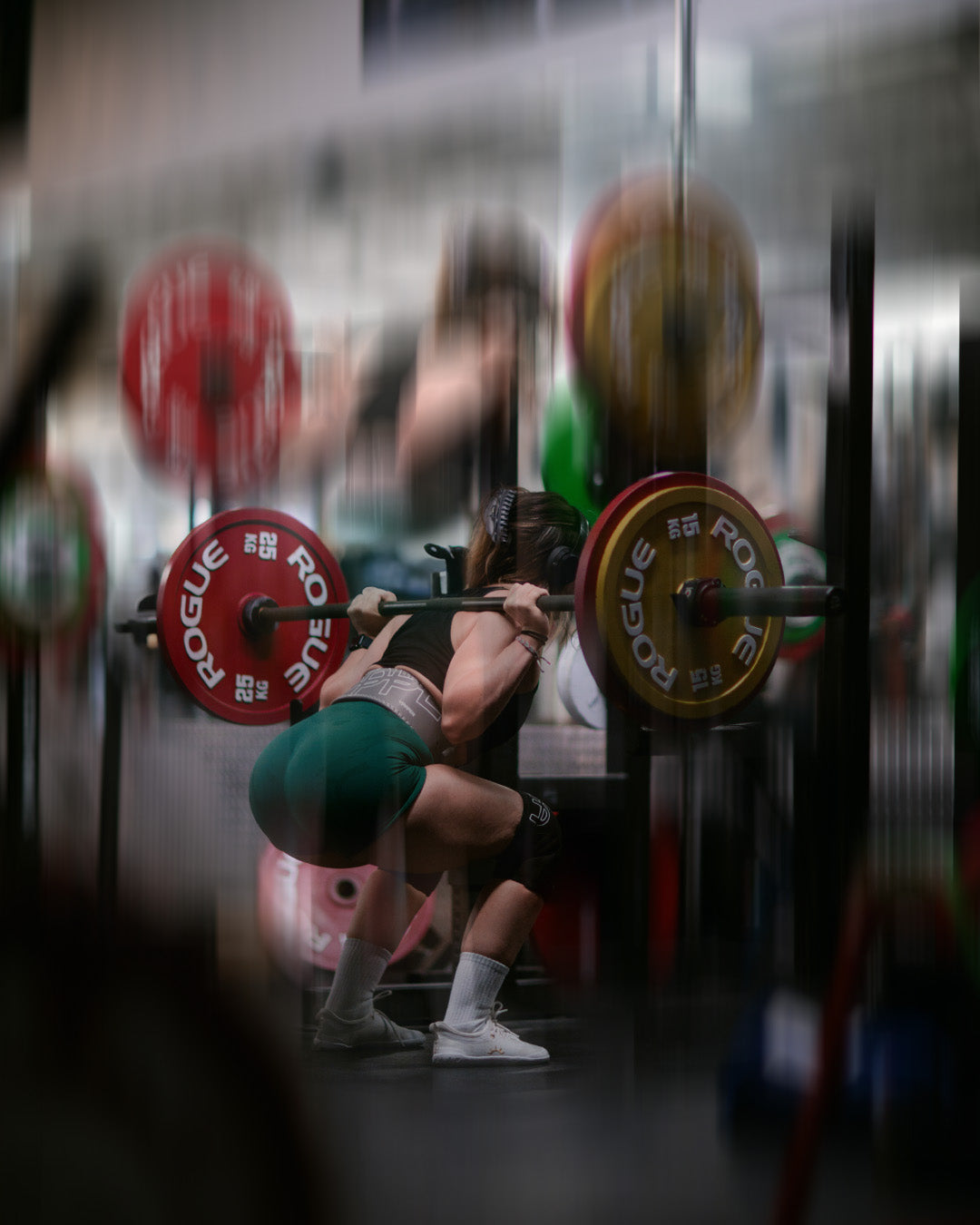Squats are a fundamental exercise for building lower body strength and muscle mass. However, they can lead to injuries if not performed correctly. Poor form, excessive weight, and a lack of proper preparation can result in serious setbacks. But don’t worry—these pitfalls are avoidable!
We’ve compiled a guide on the most common squat injuries, how they occur, and, most importantly, how to dodge them. Ready to squat smart and stay injury-free? Let’s dive in!
Back Injuries
Back injuries often occur due to rounding or arching the back during squats. This improper form can place undue stress on the spine and surrounding muscles. Weak core muscles can exacerbate this issue, as they are unable to support the spine properly. Additionally, lifting weights that are too heavy without maintaining proper technique can lead to pulled muscles, herniated discs, and other serious back injuries.
How to Prevent Them:
- Maintain a neutral spine: Keep your back straight throughout the squat. Focus on keeping your chest up and shoulders back to avoid rounding your spine.
- Engage your core: Strengthen your core with exercises like planks and leg raises. Always keep your core tight during squats.
- Use a weightlifting belt for additional support: A lifting belt can provide additional core stability and lower back support which can also lead to better muscle activation. UPPPER's Lifting Belts are perfect for squats because the tapered design doesn't restrict your range of motion. So, you can squat deeper without worrying about your back.
- Gradual weight increase: Start with a weight you can handle with proper form and gradually increase it.
Knee Injuries
Knee injuries during squats can result from poor alignment, such as the knees caving inward (valgus collapse), or from squatting too deep or not deep enough. Overloading the knees by pushing them too far forward can also strain the ligaments and tendons, leading to pain and potential injury. These issues are often compounded by weak surrounding muscles and improper warm-up routines.
How to Prevent Them:
- Proper knee alignment: Keep your knees in line with your toes, avoiding inward or outward collapse.
- Controlled depth: Aim for thighs parallel to the ground or lower, ensuring your knees do not extend past your toes.
- Strengthen supporting muscles: Include exercises like lunges and leg presses to strengthen the muscles around your knees.
- Use knee sleeves: Knee sleeves provide compression and warmth to the knee joint which can enhance mobility and flexibility without causing strain on the joints.
Hip Injuries
Hip injuries are commonly caused by poor hip mobility, an incorrect stance width, or overuse and insufficient recovery. Limited hip flexibility can force your body to compensate in ways that place additional stress on the hip joints. An improper stance can also disrupt your squat mechanics, leading to misalignment and increased risk of injury. Overloading the hips without adequate rest can exacerbate these issues.
How to Prevent Them:
- Improve hip mobility: Stretch your hip flexors, adductors, and abductors regularly.
- Correct stance: Experiment with different stance widths to find a comfortable position that allows for proper form.
- Adequate recovery: Ensure you’re giving your hips enough time to recover between workouts.
Ankle Injuries
Ankle injuries during squats often stem from limited ankle mobility and improper footwear. If your ankles lack flexibility, your body may compensate by shifting the weight to other areas, which can lead to instability and injury. Wearing shoes that do not provide adequate support or stability can further exacerbate these issues, increasing the risk of sprains or strains.
How to Prevent Them:
- Increase ankle mobility: Perform ankle stretches and calf raises to improve flexibility.
- Proper footwear: Wear shoes with flat, non-compressible soles for stability.
- Progressive overload: Gradually increase the weight to allow your body to adapt.
Shoulder Injuries
Shoulder injuries can occur from poor bar placement, lack of shoulder mobility, and incorrect grip width. Improper bar placement can place excessive stress on the shoulders, while limited shoulder mobility can restrict your range of motion, leading to compensatory movements. Using a grip that is too wide or too narrow can also affect the stability and alignment of your shoulders during squats.
How to Prevent Them:
- Bar placement: Position the barbell securely on your traps or rear deltoids.
- Enhance shoulder mobility: Include shoulder stretches and mobility drills in your warm-up.
- Optimal grip width: Ensure your hands are evenly spaced and not too wide or narrow.
Wrist Injuries
Wrist injuries are often caused by incorrect wrist position and excessive weight. Bending the wrists excessively or failing to support them properly can lead to sprains or strains. Additionally, lifting heavy weights without sufficient wrist support can exacerbate these issues, increasing the risk of injury.
How to Prevent Them:
- Wrist position: Keep your wrists straight and avoid excessive bending during squats.
- Strengthen wrists: Perform wrist strengthening exercises like wrist curls and extensions.
Squats are a powerful exercise that can yield incredible results when performed correctly. By focusing on proper form, warming up adequately, gradually increasing weight, wearing the right footwear, strengthening supporting muscles, improving mobility, using safety equipment, and listening to your body, you can avoid these common injuries from squats and achieve your fitness goals safely. Remember, consistency and attention to detail are key to long-term success in your squat training.
Need lifting gear to help you squat heavier, safely?
UPPPER has your back... and your knees! Our customer-favorite Lifting Belt is a favorite for a reason. It provides unmatched support and core stability to help you squat safely. Combine that with our 7mm Knee Sleeves, and you're ready to take your squats to the next level – without worrying about injuries!
>> SHOP UPPPER <<

